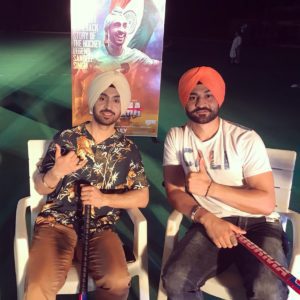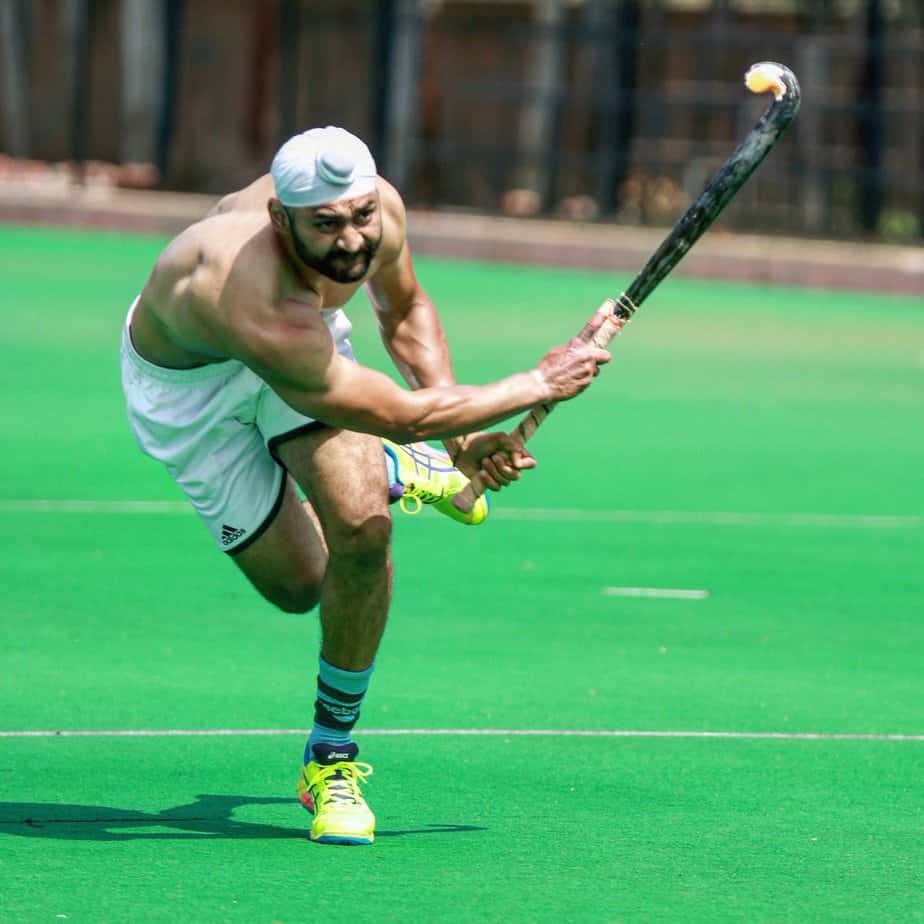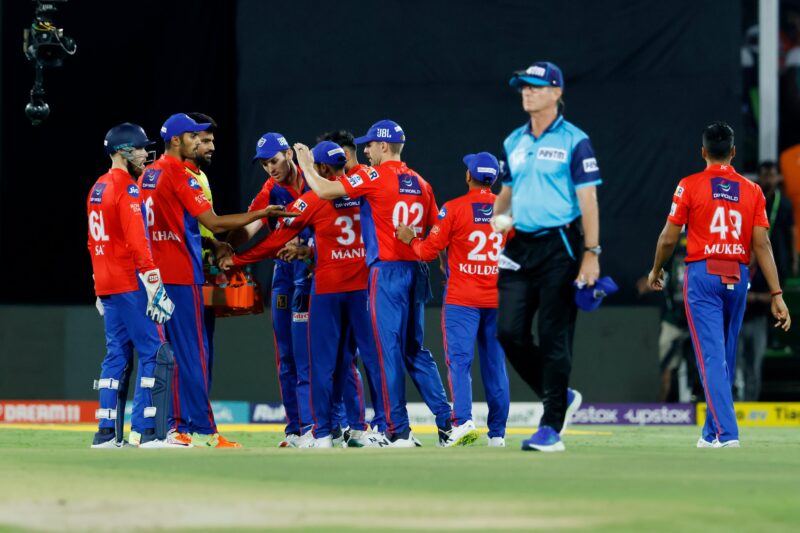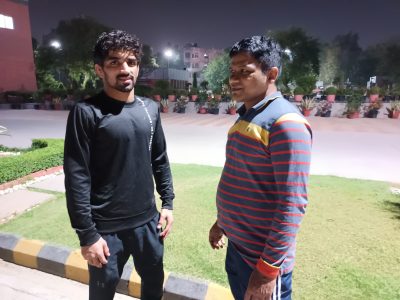As Soorma starring Diljit Dosanjh earns rave reviews across the country, here is a chat with Sandeep ‘Flicker’ Singh, the man on whom the film is based
A former captain of the Indian National Hockey team, Sandeep Singh is considered one of the best fullbacks in the history of the game. A specialist in penalty corners, he has scored a huge amount of goals with his signature drag flick. In fact, he is probably the greatest drag flicker to ever grace the game- thus earning him the nickname ‘Flicker Singh’ — with a world record for the fastest drag flick in history (145 km per hr).
However, he is not just special for his on-field exploits. Sandeep was shot in the spinal cord on a train journey in 2006 and the lower half of his body was paralysed. However, in a span of two years, he not only managed to walk, but come back to the game, don the Indian jersey once again and become the top scorer of the 2009 Sultan Azlan Shah Cup.
Now the subject of the latest sports biopic Soorma starring Diljit Dosanjh in the lead, Sandeep Singh talks to Patriot over the phone about his near-fatal injury, his inspiring comeback and about the movie.
Can you tell our readers what exactly happened on the fateful day?
The day was 22nd August 2006. I was going to play the World Cup in Germany, and was travelling to Delhi from Ambala in the Shatabdi Express to catch the flight to Germany. An RPF policeman was sitting right behind me polishing his gun.
Suddenly, I heard a noise — as if a bomb had burst right in my ear — and then I suddenly I felt as if someone had inserted a hot iron rod into my back. The policeman had accidentally shot me in the spinal cord. The pain started after a little while, as I saw blood flowing profusely on the floor of the train, and I couldn’t feel my legs.
The train was stopped and I was brought onto the platform of the Kurukshetra station. From, there I was taken to the hospital in an autorickshaw as there were no ambulances available. Due to the bumpy auto ride, the bullet that had hit my spinal cord had come under my intestines. I could feel the bullet moving inside me. The doctors at the hospital I was taken to in Kurukshetra said that I needed to be transferred to a better hospital in a big city as my condition was serious. So, my brother arranged for an ambulance with his own money and then I was transferred to a hospital in Chandigarh where the doctors said the chances of my survival are bleak.
I was shot at 8.30 am and my operation started at 4.30 pm in Chandigarh. By then I had lost a lot of blood. I was in a coma for three weeks and when I came to, I was told I was paralysed in the lower half of my body.
What did you feel when you heard the news about your paralysis?
I certainly felt disheartened when I came to know about the extent of my injury. I felt very helpless, when I couldn’t do any work on my own as I was confined to a wheelchair. But, I wanted to get out of this disappointment and stand on my own two feet.

People lose hope after such a devastating injury. But what motivated you to not only stand up, but come back to the game?
It was primarily my love for the game that motivated me to come back. I couldn’t remain confined to a wheelchair, and had to get back to the field. But more than motivation, I needed to return to the game because that was the only thing I was good at and it was the game that gave me fame, money and even a job. To win accolades for India was my goal in life, and I could not let this injury hamper my goal.
During this time of crisis, what support did you get from your family and the hockey federation?
My family was the main source of support during this time, even though doctors told me that my chances of standing up were one in a million, let alone ever playing for India. My brother was perhaps the main pillar of strength. After I came back from my rehab in Holland, he was the one who trained me to once again play hockey at a professional level.
The hockey federation also gave huge support. They sponsored my whole rehab process, and it is because of the federation’s cheque, that I could play on the field once again.
For any player with a back problem, it is difficult to take a proper stance, let alone generating such a huge amount of power for a drag flick. How did you manage?
I was helped immensely during my time in rehab at Germany. You wouldn’t believe, but when I first started walking, the moment I touched foot on the ground, I felt as if I had suffered a 440-volt electric shock. From there, to not only walk and run, but play hockey on the field at the highest level was extremely difficult. But I excercised well, so that I could increase my core strength, because if you have good core strength, then it is extremely easy to bend, take stances and hit a drag flick. On top of that, by God’s grace, I had immense willpower, that drove me to play and score goals.
What was your feeling when you donned the Indian jersey for the first time after your injury?
It was a different feeling altogether. Actually, I was quite nervous, as this was the match that could make or break my career. On one hand, if I performed poorly, that was guaranteed to be my last international match, and on the other if I played well, I knew that this could be the beginning of another chapter of my playing career. By God’s grace, I did well, and had a good international career after that.
What was your reaction when you first heard that a movie was to be made based on your life?
I was first approached by director Shaad Ali and producers Chitrangada Singh and Deepak Singh. I was ecstatic at the fact that someone found my life worthy enough to be represented on the big screen. It was also overwhelming, when you realise that so many people are going to be witness to my life. But I insisted that my story will be told as it is, and no lie there should be told to the audience about my life. I’m glad that the makers kept the story as real as possible.
Was it your decision to cast Diljit Dosanjh as yourself in the movie? If so, why?
It was a collective decision in which I too played an important part. We needed someone who not only looks like me, but also to represent my emotions, my pain and vulnerability. Most importantly, he needed to be a Sardar, so that when he walks and talks, he looks and sounds like a real Sardar; Diljit paaji ticked all the boxes and was a perfect choice to play me. While shooting, I trained him and found him extremely hardworking, as he was a complete novice in hockey. By the end of the shoot, he became a good hockey player. The results are visible on screen, as most people I have come across point at the similarity between him and me.
Personally, I was always a fan of his music and movies, as during my paralysis, I listened to his songs and it was one of my major sources of entertainment during those difficult times.
What was your first reaction when you watched the movie? Did you feel it did justice to my life?
As I had struggled through so much in my life, to see that on screen in just two hours felt quite short. My first reaction was “Yaar, yeh toh badi jaldi khatam ho gaya”. But it really felt good to witness my life once again on the big screen, especially Diljit’s wonderful performance. But what felt more satisfying, is the love it has been showered by the audiences. When people come and congratulate me and say the movie was good, I feel very proud.
What is your message to our readers?
All I want to say that every human being goes through both good and bad phases in life. When life seems difficult, and you feel it is pointless, just remember that courage and willpower will make you overcome all your difficulties, and if you have an aim in life, no obstacle is big enough, to give up on your goals. If I can do it, so can anyone else.





